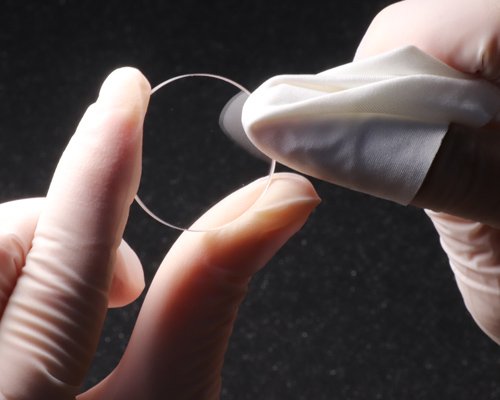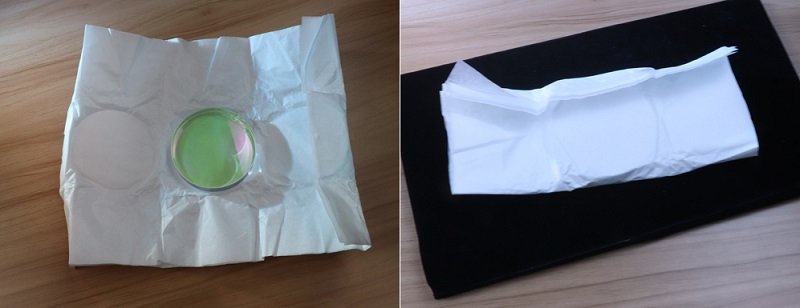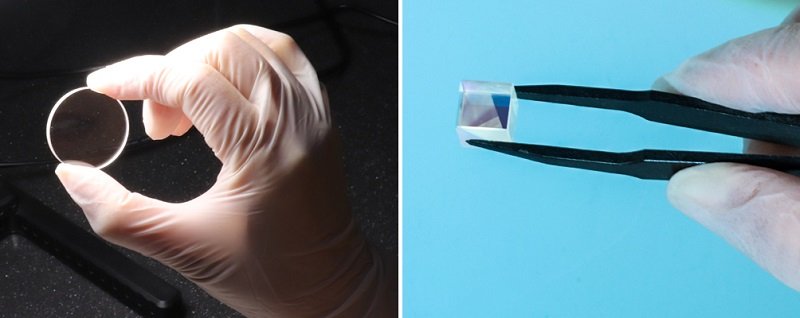Why and How to Clean Your Optics
/Optics are an essential component in a wide range of applications, from telescopes and microscopes to cameras, projectors, and fiber optic communication systems. The cleanliness of optical components plays a critical role in determining their performance, as even small amounts of dirt, dust, or fingerprints can have significant impacts on the quality of the images or signals being transmitted.
Dirt and dust can cause scatter, which is the deflection of light in multiple directions, resulting in reduced clarity and increased noise in the images or signals. This scatter can also absorb light, further reducing the quality of the image or signal. Additionally, dirt and dust can settle into small crevices and hard-to-reach areas, making it difficult to remove them completely.
Fingerprints can also be a major source of contamination for optical components. They can introduce small amounts of oil and moisture onto the surface, causing glare and reducing contrast. The refraction of light caused by these fingerprints can also cause distortions in the image or signal.
In order to maintain the optimal performance of optical components, it is important to clean them regularly. The process of cleaning optics should be done with great care, as using improper cleaning methods or materials can cause permanent damage to the surface.
A common method for cleaning optics is using microfiber cloths and lens cleaning solutions specifically designed for optical components. These cleaning solutions help to dissolve and remove dirt, dust, and fingerprints without leaving behind streaks or residue. For removing stubborn contaminants, a blower brush can be used to dislodge dirt and dust, followed by cleaning with a microfiber cloth and cleaning solution.
What are the best methods for cleaning optics?
There are several methods for cleaning optics, and the best method will depend on the type of optics, the severity of the contamination, and the desired outcome. Some of the most commonly used methods include:
Microfiber cloth and lens cleaning solution: This is a gentle and effective method for removing fingerprints and small amounts of dirt or dust. Simply apply a drop of lens cleaning solution to a microfiber cloth and gently wipe the surface of the optics until they are clean.
Blower brush: A blower brush is a gentle and effective way to remove loose dirt and dust from the surface of the optics. The soft bristles of the brush will gently dislodge the contaminants, making it easier to clean with a microfiber cloth and lens cleaning solution.
Compressed air: Compressed air can also be used to remove loose dirt and dust from the surface of the optics. Simply hold the nozzle of the compressed air canister a few inches away from the surface of the optics and blow air over the surface until the contaminants are removed.
Water and soap: If the optics are heavily contaminated, a solution of water and soap can be used to clean them. This method is best used for optics that are not coated, as the soap can damage the coating. Simply mix a small amount of mild soap with water and use a microfiber cloth to gently clean the surface of the optics.
Alcohol and distilled water: For particularly stubborn contaminants, a solution of alcohol and distilled water can be used to clean the surface of the optics. Mix equal parts of alcohol and distilled water and use a microfiber cloth to gently clean the surface. This method should only be used as a last resort, as alcohol can damage some types of optics.
Regardless of the method used, it is important to handle the optics carefully and avoid using excessive force or using abrasive materials that could scratch the surface. It is also recommended to test any cleaning solutions or methods on a small, inconspicuous area of the optics before using them on the entire surface.
Cleaning methods for specific optical components
Here are some popular cleaning methods for cleaning various optical components:
Optical windows, lenses, and mirrors: Microfiber cloths and lens cleaning solution specifically designed for optical components are commonly used to clean optical windows, optical lenses, and optical mirrors. The process involves gently wiping the surface of the component with the solution-dampened cloth and then wiping it dry with a clean, dry portion of the cloth.
Diffraction gratings: Diffraction gratings are often cleaned with a mixture of water and mild detergent, such as dish soap. The grating is gently wiped with a soft cloth or brush, being careful not to damage the delicate grooves. It is then rinsed with water and dried with a clean, dry cloth.
Beamsplitters: Beamsplitters are commonly cleaned with lens cleaning solution specifically designed for optical components, applied to a microfiber cloth. The surface is gently wiped, being careful not to apply too much pressure, and then wiped dry with a clean, dry portion of the cloth.
Optical diffusers: Optical diffusers are often cleaned with a mixture of water and mild detergent, such as dish soap. The diffuser is gently wiped with a soft cloth or brush, being careful not to damage the delicate surface, and then rinsed with water and dried with a clean, dry cloth.
Anti-reflection (AR) coatings: AR coatings are delicate and require special care during cleaning. A solution of pure isopropyl alcohol and distilled water is often used to clean AR coatings. The solution is applied to a microfiber cloth and the surface of the coating is gently wiped, being careful not to apply too much pressure. The surface is then wiped dry with a clean, dry portion of the cloth.
It is important to avoid using harsh chemicals or rough materials that could scratch the surfaces of these optical components. Additionally, it is recommended to test any cleaning solutions or methods on a small, inconspicuous area of the component before using them on the entire surface.
By using these popular cleaning methods, you can effectively maintain the performance and longevity of your optical components. Regular cleaning will help to ensure that your optical system functions optimally and avoids any negative impacts on its performance.
10 Quick Tips for Handling Optics
Of course, it would be best to not need to clean your optics in the first place and it will become less necessary once a proper handling protocol is implemented. Here are 10 quick tips for reducing the need to cleaning your optics:
Use gloves: Wearing gloves can help protect the surfaces of optical components from oils and fingerprints.
Avoid touching surfaces: Whenever possible, handle optical components by their edges or mounting surfaces rather than their surfaces.
Avoid extreme temperatures: Optical components can be sensitive to extreme temperatures, which can cause damage or affect performance.
Store in a clean environment: Store optical components in a clean, dry environment to minimize the risk of dust or debris settling on the surfaces.
Use the proper cleaning solution: Use lens cleaning solution specifically designed for optical components when cleaning optical surfaces.
Handle with care: Optical components can be delicate, so handle them carefully to avoid damaging the surfaces.
Avoid using rough materials: Avoid using rough materials, such as paper towels or abrasive cloths, when cleaning optical surfaces.
Store properly: Store optical components in protective containers or packaging when not in use to minimize the risk of damage.
Avoid exposure to strong light sources: Prolonged exposure to strong light sources, such as direct sunlight, can cause damage to optical components.
Label components: Label optical components with their specifications and orientation to avoid confusion and ensure proper handling.
Conclusion
By following these tips, you can effectively handle and maintain the performance and longevity of your optical components. Proper handling and storage will help to ensure that your optical system functions optimally and avoids any negative impacts on its performance.
If you need any pointers or just want to reach out and say “howdy” don’t hesitate to e-mail us info@firebirdoptics.com
Here’s to your success!
Firebird Optics







